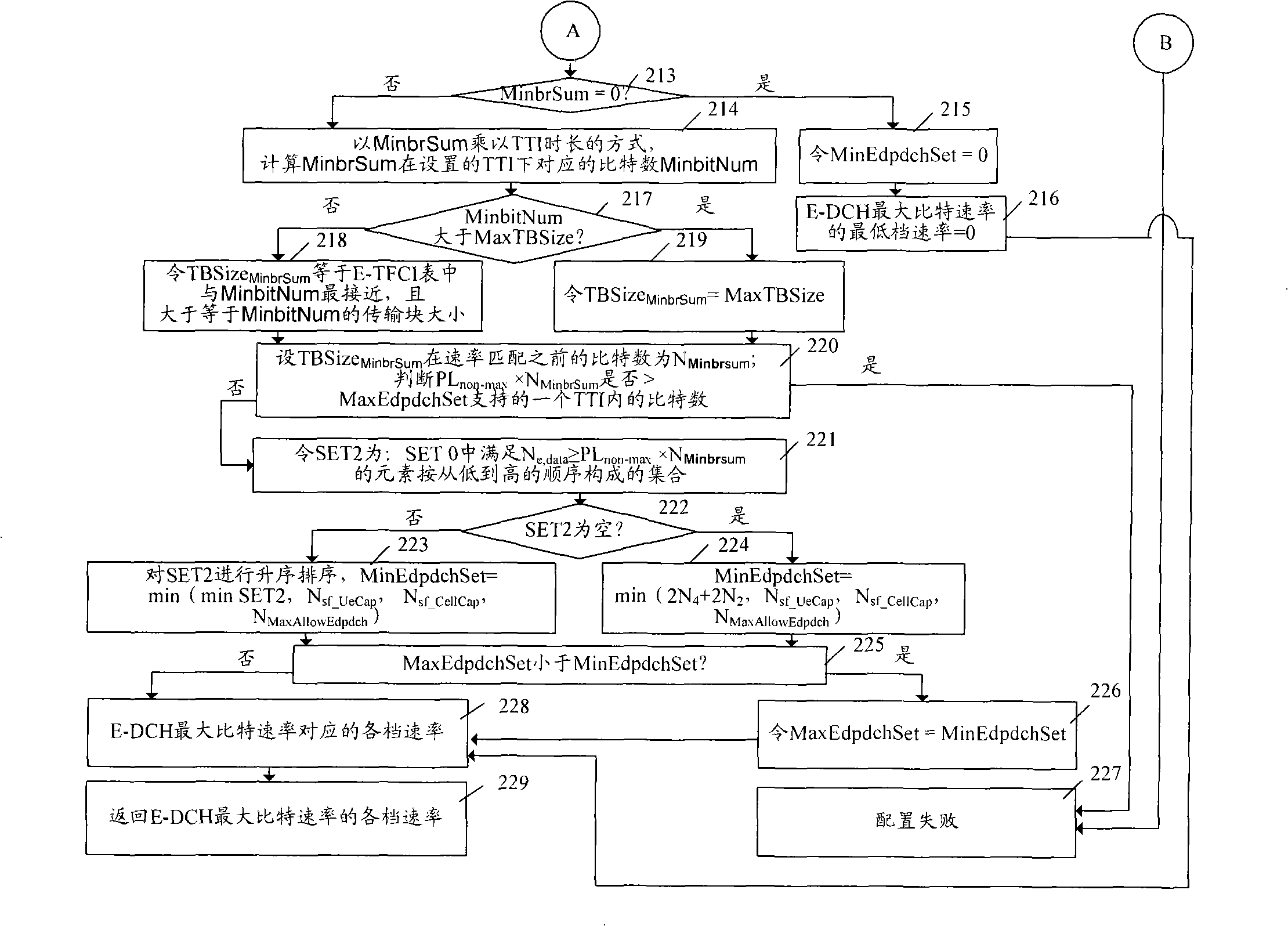Solving method for non-service cell problem handling and state transition
A non-serving cell and problem-handling technology, which is applied in the field of non-serving cell processing problems, and can solve problems such as decoding errors and dropped calls.
- Summary
- Abstract
- Description
- Claims
- Application Information
AI Technical Summary
Problems solved by technology
Method used
Image
Examples
Embodiment 1
[0170] Method Embodiment 1: The current specific situation is: the change of the service carried on the E-DCH causes the change of the TTI, the change of the serving cell due to UE movement or the change of the TTI after hard handover, or the occurrence of the SF capability of the new serving cell change, such as image 3 As shown, the processing method adopted in this embodiment includes the following steps:
[0171] Step 302, recalculate the adjustable rate level corresponding to the maximum bit rate of the E-DCH.
[0172] Step 303. Determine whether the highest gear of the adjustable rate gear corresponding to the maximum bit rate of the E-DCH has changed. If so, go to step 304. Otherwise, go to step 301. It is still in a normal state.
[0173] Step 304, reconfigure the E-DCH maximum bit rate, which is the highest gear of the adjustable rate gear corresponding to the E-DCH maximum bit rate, go to step 301, and it is still in the normal state.
Embodiment 2
[0174] Method Embodiment 2: The current specific situation is: when receiving an indication of a non-serving cell processing problem reported by the wireless link of the non-serving cell, such as Figure 4 As shown, the processing method adopted in this embodiment includes the following steps:
[0175] Step 402, according to the adjustable rate gear corresponding to the E-DCH maximum bit rate, judge whether the highest gear rate of the adjustable rate gear is equal to the lowest gear rate, if so, go to step 405; otherwise, continue to step 403.
[0176] Step 403: Downgrade the maximum bit rate of the E-DCH to the lowest rate, and reassign it to the Node B to which each wireless link in the active set belongs.
[0177] Step 404, judging whether the reconfiguration is successful, if successful, go to step 405; otherwise, go to step 301, and it is still in a normal state.
[0178] Step 405, start the maximum bit rate recovery timer, and currently enter the problem state.
Embodiment 3
[0179] Method Embodiment 3: The current specific situation is: except for the other situations of the above-mentioned embodiments, since the processing in other situations does not involve the adjustment of the adjustable rate gear corresponding to the maximum bit rate of the E-DCH, it is processed according to the normal process. The processing method adopted in this embodiment includes the steps of: judging whether the processed UE has an E-DCH, if not, exiting the current processing flow; otherwise, go to step 301, and is still in a normal state.
[0180] A method for processing state migration of a non-serving cell in an HSUPA system, the method includes a preset adjustable rate file, and a maximum bit rate recovery timer; and the initial state is a problem state, and different processing methods are adopted according to the current specific situation Handle the state transition process.
[0181]Step 501, in a problem state. When in this problem state, the maximum bit rate...
PUM
 Login to View More
Login to View More Abstract
Description
Claims
Application Information
 Login to View More
Login to View More - R&D
- Intellectual Property
- Life Sciences
- Materials
- Tech Scout
- Unparalleled Data Quality
- Higher Quality Content
- 60% Fewer Hallucinations
Browse by: Latest US Patents, China's latest patents, Technical Efficacy Thesaurus, Application Domain, Technology Topic, Popular Technical Reports.
© 2025 PatSnap. All rights reserved.Legal|Privacy policy|Modern Slavery Act Transparency Statement|Sitemap|About US| Contact US: help@patsnap.com



